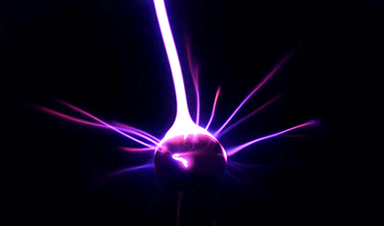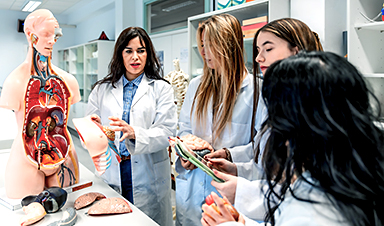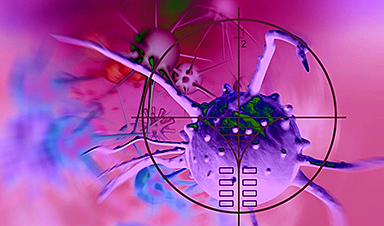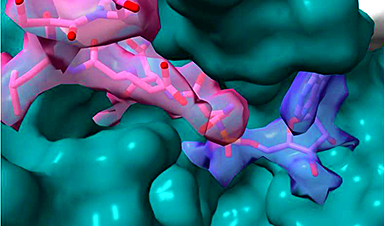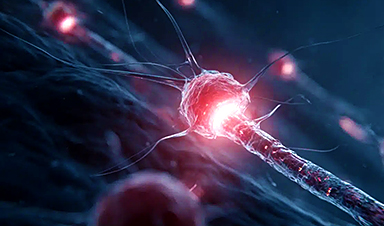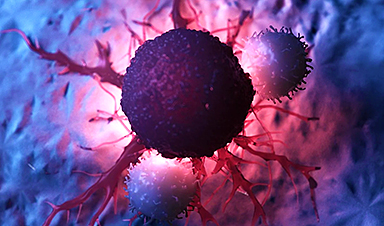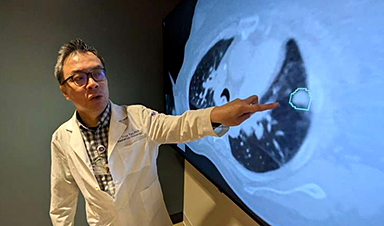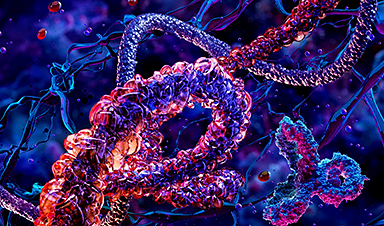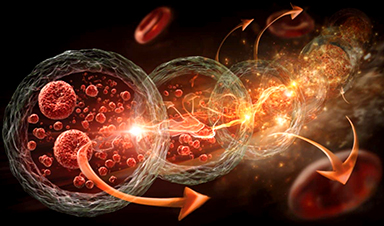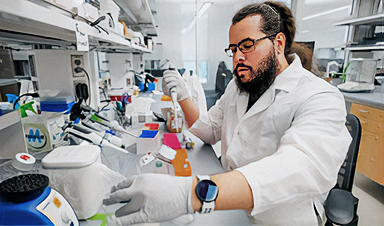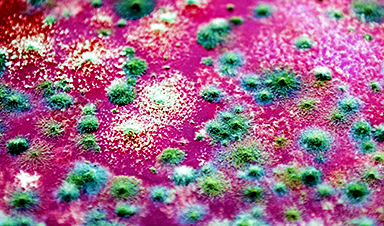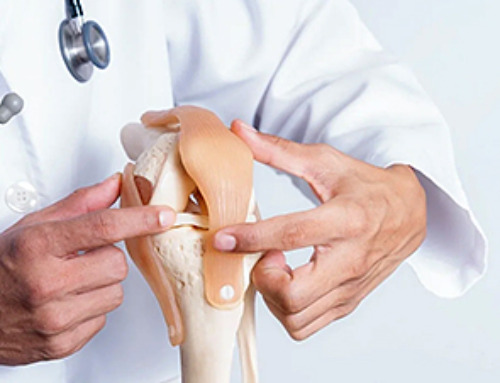Scientists are a step closer to unraveling the mysterious forces of the universe after working out how to measure gravity on a microscopic level.
But now physicists at the University of Southampton, working with scientists in Europe, have successfully detected a weak gravitational pull on a tiny particle using a new technique.
They claim it could pave the way to finding the elusive quantum gravity theory.
The experiment, published in Science Advances, used levitating magnets to detect gravity on microscopic particles—small enough to border on the quantum realm.
Lead author Tim Fuchs, from the University of Southampton, said the results could help experts find the missing puzzle piece in our picture of reality.
He added, “For a century, scientists have tried and failed to understand how gravity and quantum mechanics work together. Now we have successfully measured gravitational signals at a smallest mass ever recorded, it means we are one step closer to finally realizing how it works in tandem.
“From here we will start scaling the source down using this technique until we reach the quantum world on both sides. By understanding quantum gravity, we could solve some of the mysteries of our universe—like how it began, what happens inside black holes, or uniting all forces into one big theory.”
The rules of the quantum realm are still not fully understood by science—but it is believed that particles and forces at a microscopic scale interact differently than regular-sized objects.
Academics from Southampton conducted the experiment with scientists at Leiden University in the Netherlands and the Institute for Photonics and Nanotechnologies in Italy.
Their study used a sophisticated setup involving superconducting devices, known as traps, with magnetic fields, sensitive detectors and advanced vibration isolation. It measured a weak pull, just 30aN, on a tiny particle 0.43mg in size by levitating it in freezing temperatures a hundredth of a degree above absolute zero—about –273 degrees Celsius.
The results open the door for future experiments between even smaller objects and forces, said Professor of Physics Hendrik Ulbricht also at the University of Southampton.
He added, “We are pushing the boundaries of science that could lead to new discoveries about gravity and the quantum world.
“Our new technique that uses extremely cold temperatures and devices to isolate vibration of the particle will likely prove the way forward for measuring quantum gravity.
“Unraveling these mysteries will help us unlock more secrets about the universe’s very fabric, from the tiniest particles to the grandest cosmic structures.”
More information: Tim Fuchs et al, Measuring gravity with milligram levitated masses, Science Advances (2024). DOI: 10.1126/sciadv.adk2949. www.science.org/doi/10.1126/sciadv.adk2949
Journal information: Science Advances
News
Repurposed drugs could calm the immune system’s response to nanomedicine
An international study led by researchers at the University of Colorado Anschutz Medical Campus has identified a promising strategy to enhance the safety of nanomedicines, advanced therapies often used in cancer and vaccine treatments, [...]
Nano-Enhanced Hydrogel Strategies for Cartilage Repair
A recent article in Engineering describes the development of a protein-based nanocomposite hydrogel designed to deliver two therapeutic agents—dexamethasone (Dex) and kartogenin (KGN)—to support cartilage repair. The hydrogel is engineered to modulate immune responses and promote [...]
New Cancer Drug Blocks Tumors Without Debilitating Side Effects
A new drug targets RAS-PI3Kα pathways without harmful side effects. It was developed using high-performance computing and AI. A new cancer drug candidate, developed through a collaboration between Lawrence Livermore National Laboratory (LLNL), BridgeBio Oncology [...]
Scientists Are Pretty Close to Replicating the First Thing That Ever Lived
For 400 million years, a leading hypothesis claims, Earth was an “RNA World,” meaning that life must’ve first replicated from RNA before the arrival of proteins and DNA. Unfortunately, scientists have failed to find [...]
Why ‘Peniaphobia’ Is Exploding Among Young People (And Why We Should Be Concerned)
An insidious illness is taking hold among a growing proportion of young people. Little known to the general public, peniaphobia—the fear of becoming poor—is gaining ground among teens and young adults. Discover the causes [...]
Team finds flawed data in recent study relevant to coronavirus antiviral development
The COVID pandemic illustrated how urgently we need antiviral medications capable of treating coronavirus infections. To aid this effort, researchers quickly homed in on part of SARS-CoV-2's molecular structure known as the NiRAN domain—an [...]
Drug-Coated Neural Implants Reduce Immune Rejection
Summary: A new study shows that coating neural prosthetic implants with the anti-inflammatory drug dexamethasone helps reduce the body’s immune response and scar tissue formation. This strategy enhances the long-term performance and stability of electrodes [...]
Scientists discover cancer-fighting bacteria that ‘soak up’ forever chemicals in the body
A family of healthy bacteria may help 'soak up' toxic forever chemicals in the body, warding off their cancerous effects. Forever chemicals, also known as PFAS (per- and polyfluoroalkyl substances), are toxic chemicals that [...]
Johns Hopkins Researchers Uncover a New Way To Kill Cancer Cells
A new study reveals that blocking ribosomal RNA production rewires cancer cell behavior and could help treat genetically unstable tumors. Researchers at the Johns Hopkins Kimmel Cancer Center and the Department of Radiation Oncology and Molecular [...]
AI matches doctors in mapping lung tumors for radiation therapy
In radiation therapy, precision can save lives. Oncologists must carefully map the size and location of a tumor before delivering high-dose radiation to destroy cancer cells while sparing healthy tissue. But this process, called [...]
Scientists Finally “See” Key Protein That Controls Inflammation
Researchers used advanced microscopy to uncover important protein structures. For the first time, two important protein structures in the human body are being visualized, thanks in part to cutting-edge technology at the University of [...]
AI tool detects 9 types of dementia from a single brain scan
Mayo Clinic researchers have developed a new artificial intelligence (AI) tool that helps clinicians identify brain activity patterns linked to nine types of dementia, including Alzheimer's disease, using a single, widely available scan—a transformative [...]
Is plastic packaging putting more than just food on your plate?
New research reveals that common food packaging and utensils can shed microscopic plastics into our food, prompting urgent calls for stricter testing and updated regulations to protect public health. Beyond microplastics: The analysis intentionally [...]
Aging Spreads Through the Bloodstream
Summary: New research reveals that aging isn’t just a local cellular process—it can spread throughout the body via the bloodstream. A redox-sensitive protein called ReHMGB1, secreted by senescent cells, was found to trigger aging features [...]
AI and nanomedicine find rare biomarkers for prostrate cancer and atherosclerosis
Imagine a stadium packed with 75,000 fans, all wearing green and white jerseys—except one person in a solid green shirt. Finding that person would be tough. That's how hard it is for scientists to [...]
Are Pesticides Breeding the Next Pandemic? Experts Warn of Fungal Superbugs
Fungicides used in agriculture have been linked to an increase in resistance to antifungal drugs in both humans and animals. Fungal infections are on the rise, and two UC Davis infectious disease experts, Dr. George Thompson [...]
